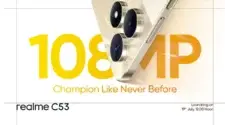Today, Google published the third public beta of Android 13, claiming “platform stability.” This indicates that Google has completed the big improvements and that it is now time to fine-tune the details, repair issues, and improve speed.
All application-oriented behaviors and APIs are final in Beta 3. This involves being ready to deploy an application for developers. For consumers, this means that there will be little modifications to functionality or the user interface in the future. It’s also worth mentioning that Android 13 was two months ahead of Android 12 in reaching this milestone.
In February, the first developer preview of Android 13 was available; followed by the first public beta in April and the second public beta in May during the Google I/O conference. The Android 13 upgrade is a smaller one than the Android 12 version.
New privacy features like notification permissions and picture pickers; as well as productivity features like customized app ICONS, HDR video, Bluetooth LE Audio, and SUPPORT for MIDI 2.0 through USB, are all included in Android 13.

Android 13 Public Beta 3 is here
The following devices are compatible with Android 13 Beta 3:
- Pixel 4 and 4 XL
- Pixel 4A and 4A (5G)
- 5 and Pixel 5 a
- Pixel 6 and 6 Pro
Apart from Android 13, car fans have lately begun receiving the newest Android Auto 7.8 update from Google. The update is now only accessible to people who have consented to take part in beta testing. However, Android Auto 7.8 is now available for download on the site and as an APK for self-installation.
Of course, this isn’t the major change to the Coolwalk interface that Google announced in early May at Google I/O 2022. It will be available toward the end of the summer. The most noticeable change in Android Auto 7.8 for test participants was a new notification system that tells users when upgrades are available. In addition, a warning that the installation / setup procedure would need to be redone began to emerge, which puzzled many users, according to responses on forums and social media.
Google’s automotive platform has also received a substantial boost. Android Automotive OS 12L is now available for Android Automotive-enabled automobiles, such as the Polestar 2 and Volvo XC40 Recharg. According to internet reviews, the Android Automotive OS 12L upgrade is “massive.” Quick control is one of the most important advances. Manufacturers can add select settings, such as Bluetooth switches, the status bar, or other system user interface components. Users will be able to “safely adjust critical settings while driving without launching the Settings program,” according to the developers.





